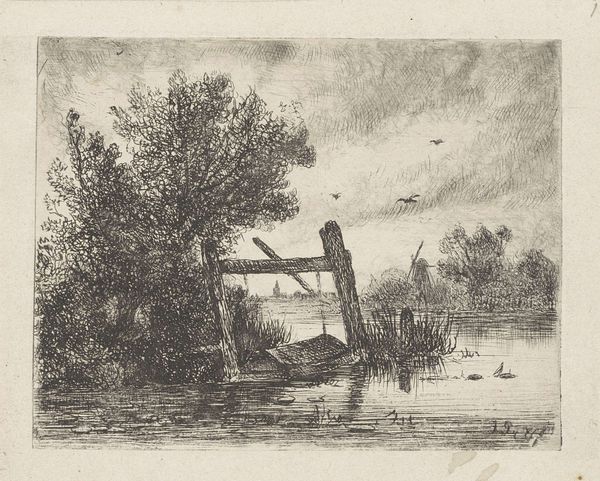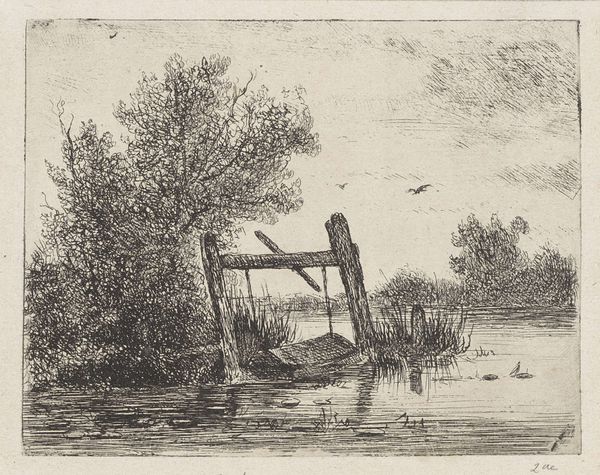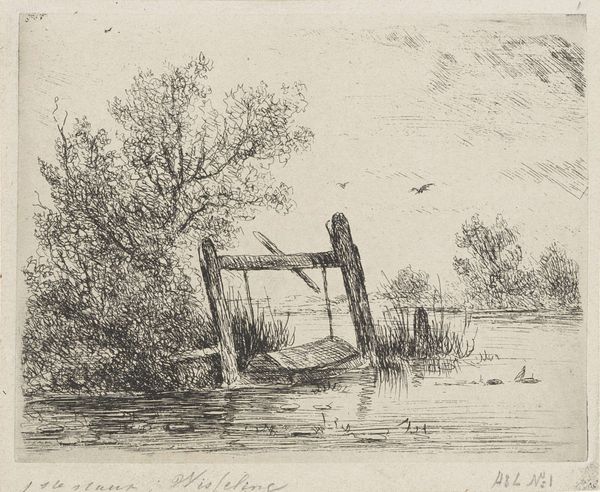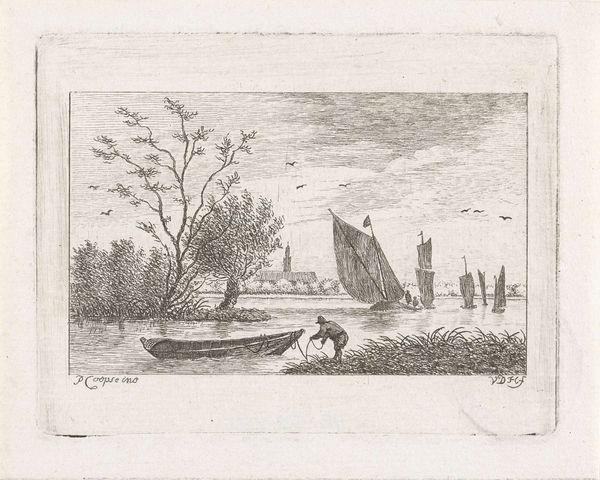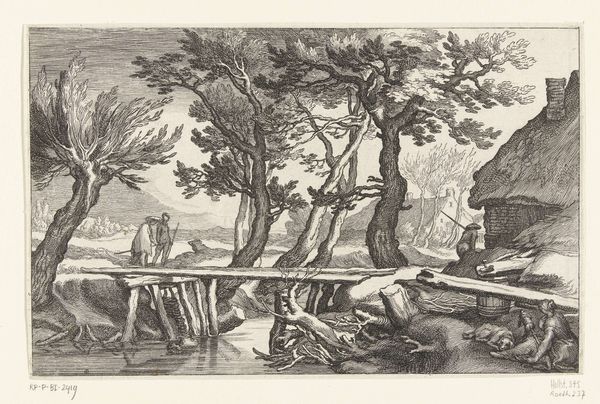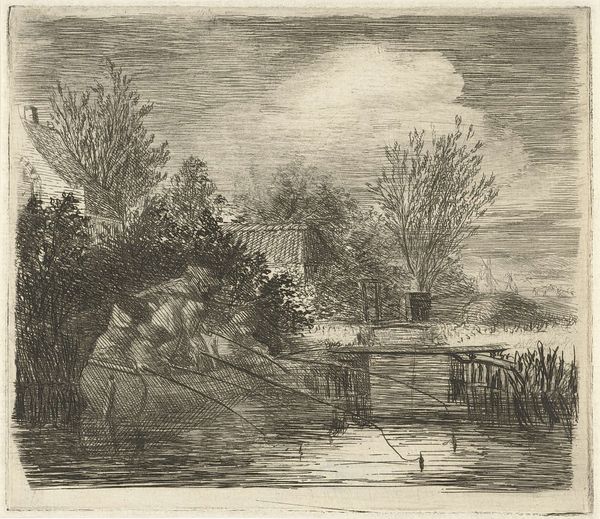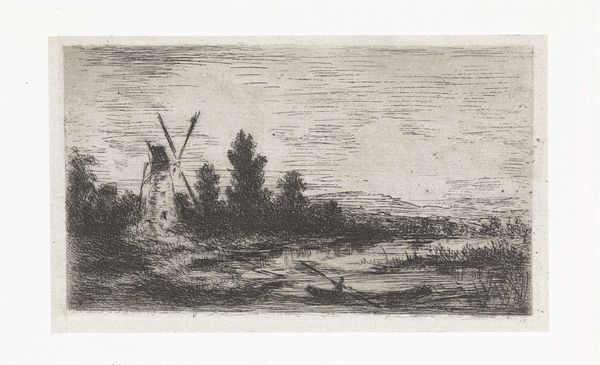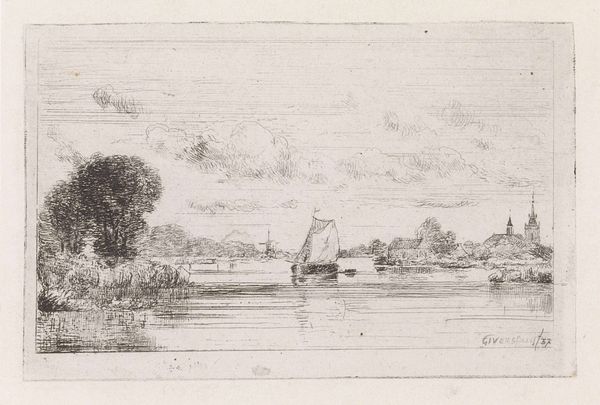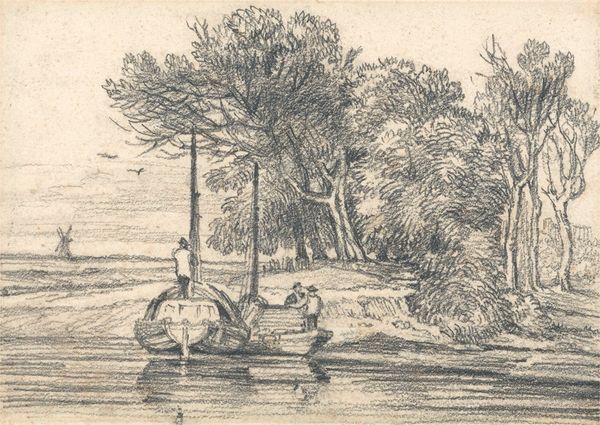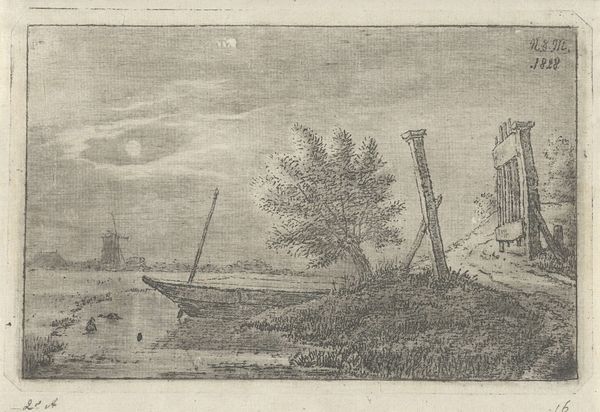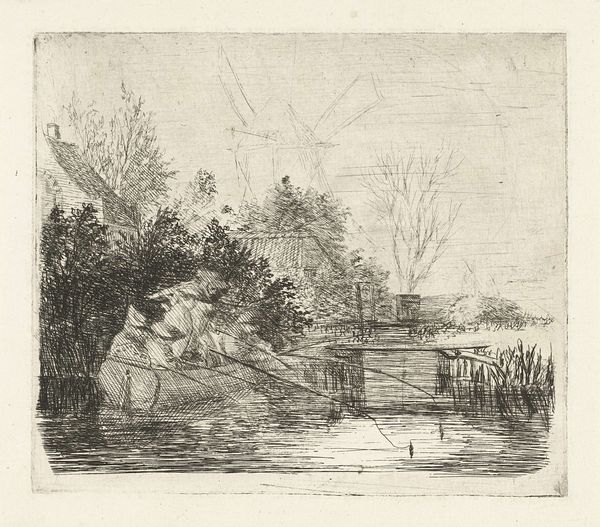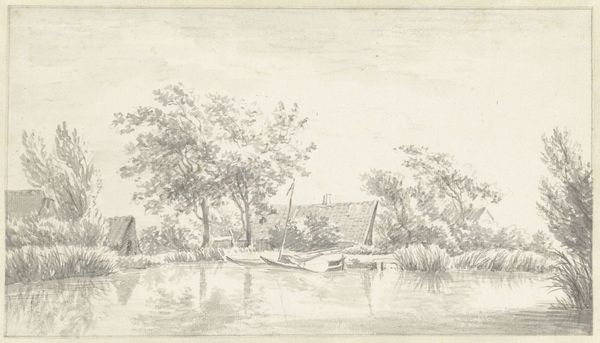
print, etching
#
pencil drawn
# print
#
etching
#
pencil sketch
#
landscape
#
river
#
pencil drawing
#
realism
Dimensions: height 96 mm, width 123 mm
Copyright: Rijks Museum: Open Domain
Curator: Here we have Johannes Pieter van Wisselingh's "Visfuik aan een begroeide waterkant," or "Fish Trap on a Vegetated Riverbank," created sometime between 1830 and 1878. It’s an etching, currently held at the Rijksmuseum. Editor: My first impression is a sense of melancholy. The broken wooden structure dominates the foreground, almost like a barrier, and the muted tones give it a very somber mood. Curator: It’s intriguing to consider this etching in terms of production. Printmaking in this era relied on skilled artisans, suggesting a connection between the artist, the materials, and the marketplace. What were the economics of this particular piece? Editor: I think the dilapidated fishtrap in the composition speaks to the fleeting nature of human endeavors and our constant negotiation with nature. The crumbling wood contrasts sharply with the enduring image of the windmill in the distance, a familiar emblem of Dutch heritage. What does the broken-down fishtrap tell us, though? Curator: Perhaps the degradation of the trap reflects changing agricultural practices or environmental factors, things influencing fishing techniques and labor? It seems this river scene implies the impact of human activity, intended to harness nature. Editor: Absolutely. We have to acknowledge those ever-present waterbirds! In many cultures, birds are perceived as messengers, connecting earth and sky, which may hint to a yearning for something beyond the mundane reality depicted. Curator: Considering Van Wisselingh's social context, one wonders about the role this image may have played within Dutch society. It reflects a reality and how labor systems transformed through these changes. Editor: It’s as if the work invites contemplation on themes of decay, legacy, and maybe even spiritual yearning—all told through the intimate, very tangible setting of this waterside scene. Curator: Right, by analyzing it within the historical context of Dutch printmaking and artistic training, it adds another level to how art mirrored shifts within the local world. Editor: I see your perspective. In this melancholic scene we can appreciate art's enduring capacity to echo social shifts within material form and iconography.
Comments
No comments
Be the first to comment and join the conversation on the ultimate creative platform.
